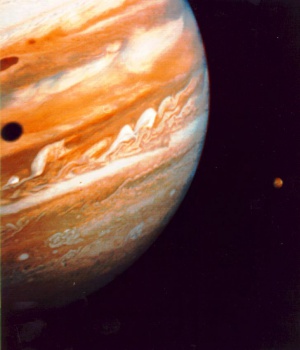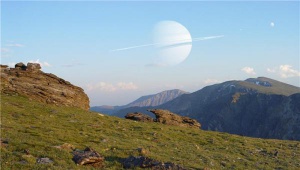Difference between revisions of "Planets"
From Billy Meier
Daniel Leech (talk | contribs) |
Daniel Leech (talk | contribs) |
||
| Line 13: | Line 13: | ||
| − | * [[Malona]] also called Malon<ref>[[Contact Report 155]]</ref> | + | * [[Malona]] also called Malon<ref>[[Contact Report 155]]</ref>, [[Phaeton]]<ref>http://en.wikipedia.org/wiki/Phaeton_(hypothetical_planet)</ref>, and Planet V by modern theorists<ref>http://en.wikipedia.org/wiki/Planet_V</ref>. Is mentioned by [[Semjase]] in [[Contact Report 004|contact 4]] and yet again in [[Contact Report 251|contact 251]] where its explained how it was destroyed in the distant past of the [[Sol star system]]. Its current existence now constituting smaller and larger pieces forming the asteroid belt.<ref>http://en.wikipedia.org/wiki/Asteroid_belt</ref><ref>http://en.wikipedia.org/wiki/Planet_V</ref> |
Revision as of 11:31, 15 February 2014
As you might expect, there are numerous mentions and discussions about various different planets in the contact reports. As well as specific information about what constitutes a planet, the stages of developmental evolution of life on any given planet, planets of our past like Malona as well as our future. Planet-Planets, Planets in other star systems, like the Lesa Star System, Planets in time shifted dimensions like Erra, in past galaxies, the Lyren galaxy and of course in our own times galaxy the Milky way (as Earth people have designated it), other galaxies such as the Nepon Galaxy and even other universes. Like our own DERN universes slightly younger twin the DAL where Akon is said to be.
List of planets
| Sol star system |
- Earth also named Terra[1]. In the Sol star system, the planet we think we know well.
- Malona also called Malon[2], Phaeton[3], and Planet V by modern theorists[4]. Is mentioned by Semjase in contact 4 and yet again in contact 251 where its explained how it was destroyed in the distant past of the Sol star system. Its current existence now constituting smaller and larger pieces forming the asteroid belt.[5][6]
- Mars is now a desolate and uninhabitable planet[7] but it was not always this way. Its explained in contact 251 how "masses of diverse races found refuge on the planets Mars and Malona/Phaeton, where they constructed cities, pyramids, stations and other things. They led a good life on Mars until the planet become uninhabitable through cosmic influences.
- Venus in contact 31 is flown past in a beamship when Billy jokes about photographing a Venusian, which spurs a conversation about fraudulent contactees, because no one lives there. Its another desolate and uninhabitable planet.[8] Venus was formatively a planet-planet of Uranus having been torn from its orbit by the Destroyer planet/comet in 6,339.5 BCE.[9]
- Skill in the 238th contact, 18th May, 1991, Ptaah told Billy that a planet where todays Venus has its orbit, collided with the Destroyer planet/comet hurtling it into the sun. It was 6,100 kilometres in diameter. Skill was the original second planet in the Sol star system and therefore likely developed a more befitting/suitable elliptical orbit than that of the present day Venus nor an anti-clockwise (retrograde) rotation once every 243 Earth days, additionally having its own natural satellite (moon).[10][11]
- Jupiter is mentioned in Contact report 39, 115, 182, 228, 251, FIGU Bulletin 4, 5, 6, 7, 8, 9 and 11.
- Kathein is discussed in contact 228, contact 223 and FIGU Bulletin 009 as a planet in the Sol star system but which remains hidden from the perspective of earth due to its orbit residing beyond the sun, behind the sun from our perspective. Travelling at a tremendous velocity having been freed from the Destroyer Planet's field of force during its tenth to last passage through our star system. Its uninhabited and will drift out of the Sol star system in the future (may have already occurred in fact).
- Vulcan/Volkano A big comet, or a small planet, which is not in a position to bear human life because its orbit is the closest to the sun. It played a role in ancient cultures such as Akkadia, Babylon and in Sumer. Limited information was offered in FIGU Bulletin 009.
| Plejaren Federation |
- Erra is the home-world of Ptaah, Quetzal, Semjase, Sfath and 550,000,000 others. A world of the Plejaren Federation located in the Tayget, Plejara or Plejares star system. Under the leadership of the Andromedan High Council.
- Askal is another inhabited planet of the Tayget, Plejares or Plejara star system. Sudor of Askal from this world has previously contacted Billy according to the Contact Statistics.
- Luseta is another inhabited planet of the Tayget, Plejares or Plejara star system. Nefratisa is a Lusetan from this world contacted Billy on at least 26th June 2001 according to the Contact Statistics.
- Timar is a planet in the Akon star system in the DAL Universe. Asket and Nera are from this world. The Timmar are 'possibly' members of the Plejaren Federation.
- Deron resides in the Wega star system and they are members of the Plejaren Federation.
- Druan a planet in the Nol star system where the Druan are said to live. They are also members of the Plejaren Federation.
- Njsan a planet in the Lyra star system where the Njsan reside and are members of the Plejaren Federation.
- Sater also in the Lyra star system and members of the Plejaren Federation.
- Bardan 1, 2 and 3. The People's Union of Bardan is located in the Coma Galaxy and are recently new members of the Plejaren Federation. One of their ships self-destructed in Russia, Earth on 30th June 1908, which came to later be known as the Tunguska event.[12][13]
| Other Worlds |
- Sadr is explained in contact 238 as a world in the Waron star system and birthplace of Nokodemion.
- Saban A planet 2.1 million light years distance from Sol where a splinter group from The Bafath had a base of operations until 1982 when they were arrested by Plejaren forces.
- Kartag A planet in the Neb Star System in the Aratom Galaxy. Visited by Billy and the Plejaren on 16th Sept, 1975. The planet is inhabited by humans at a similar stage of development to that of Earth humans. The inhabitants were destroying one another with nuclear weapons. They use aircraft similar to beamships. The system was under the control at the time of the visit by a highly developed form of life, which intervened to prevent an extra-planetary catastrophe. The inhabitants adhered to the advice and were thus saved from total self-annihilation.[14]
- Akart is discussed in contact 35 and later in contact 481. It was a planet 5 light years distance from Earth that was inhabited by over 23,000,000,000 humans. They were capable of space travel and visited Earth often to collect fruits, grains and vegetables to set out and grow on their overpopulated planet. Atleast, this was the case until the planet suffered an 'oxygen collapse' or 'atmospheric collapse' as explained in contact 481, whereby the excessively overpopulated, therefore mismanaged, world developed a CO2 concentration which caused a widespread destruction of life. Also see Climate Change on earth for a comparison of culminating factors.
| Comets |
- Destroyer planet/comet last flew past in 1680 making it "The Great Comet of 1680", the first comet discovered by telescope.[15] Its been the cause of many problems in the Sol star system over a long period of time, but has now been removed by the Plejaren (Also see Comets). Contact Report 150 states its volume to be 1.72 times that of the Earth though its weight has been reduced to an average mass of that of the Earth. It rotated at a velocity of 314.7 m/s at the equator compared to the Earth's 465 m/s.
- UNI/Nibiru/Nubiru (Transpluto comet) is mentioned in FIGU Bulletin 009, FIGU Bulletin 010 and briefly by Quetzal in contact 228. An uncommonly big comet, which has an orbital period around the solar system of around 3,600 years. The comet is not in a position to bear human life. That which emerges from old texts regarding the Annunaki and the planet Niburu is based on mythological facts as well as beliefs, misguidance and erroneous assumptions. Also see Comets.
Further Reading
References
- ↑ http://www.futureofmankind.co.uk/Billy_Meier/Contact_Report_117
- ↑ Contact Report 155
- ↑ http://en.wikipedia.org/wiki/Phaeton_(hypothetical_planet)
- ↑ http://en.wikipedia.org/wiki/Planet_V
- ↑ http://en.wikipedia.org/wiki/Asteroid_belt
- ↑ http://en.wikipedia.org/wiki/Planet_V
- ↑ http://en.wikipedia.org/wiki/Mars
- ↑ http://en.wikipedia.org/wiki/Venus
- ↑ Contact Report 150
- ↑ http://forum.figu.org/us/messages/863/3279.html#
- ↑ Venus
- ↑ FIGU Bulletin 59
- ↑ The Asket Contact Reports
- ↑ UFO...Contact From The Pleiades
- ↑ http://en.wikipedia.org/wiki/C/1680_V1



